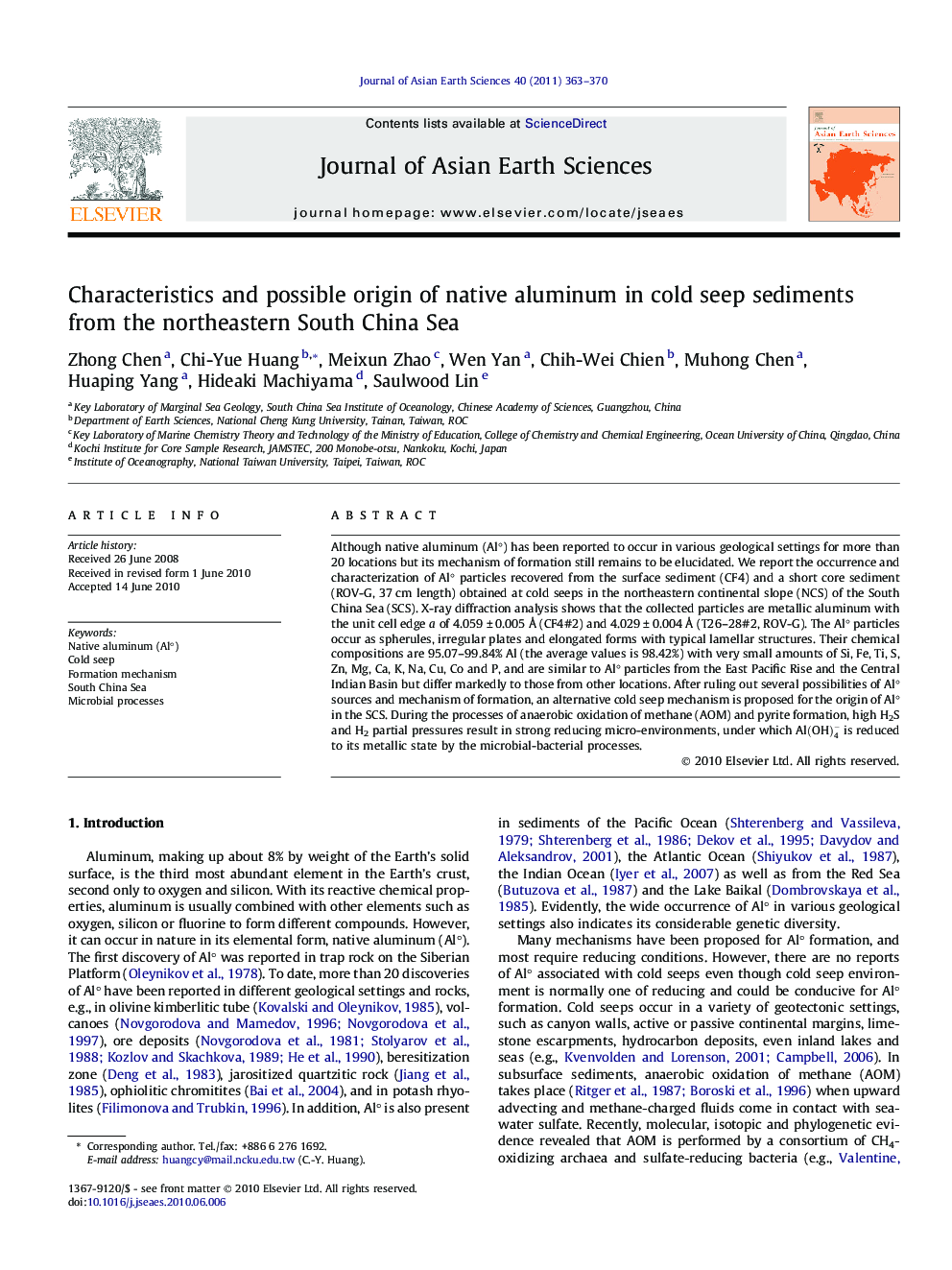| Article ID | Journal | Published Year | Pages | File Type |
|---|---|---|---|---|
| 4731805 | Journal of Asian Earth Sciences | 2011 | 8 Pages |
Although native aluminum (Al°) has been reported to occur in various geological settings for more than 20 locations but its mechanism of formation still remains to be elucidated. We report the occurrence and characterization of Al° particles recovered from the surface sediment (CF4) and a short core sediment (ROV-G, 37 cm length) obtained at cold seeps in the northeastern continental slope (NCS) of the South China Sea (SCS). X-ray diffraction analysis shows that the collected particles are metallic aluminum with the unit cell edge a of 4.059 ± 0.005 Å (CF4#2) and 4.029 ± 0.004 Å (T26–28#2, ROV-G). The Al° particles occur as spherules, irregular plates and elongated forms with typical lamellar structures. Their chemical compositions are 95.07–99.84% Al (the average values is 98.42%) with very small amounts of Si, Fe, Ti, S, Zn, Mg, Ca, K, Na, Cu, Co and P, and are similar to Al° particles from the East Pacific Rise and the Central Indian Basin but differ markedly to those from other locations. After ruling out several possibilities of Al° sources and mechanism of formation, an alternative cold seep mechanism is proposed for the origin of Al° in the SCS. During the processes of anaerobic oxidation of methane (AOM) and pyrite formation, high H2S and H2 partial pressures result in strong reducing micro-environments, under which Al(OH)4- is reduced to its metallic state by the microbial-bacterial processes.
